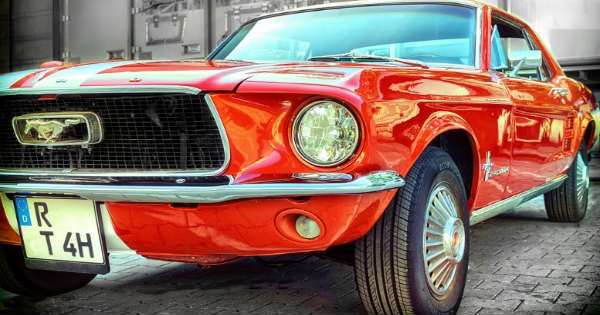Restoring a muscle car is a long process, even if you eventually decide to hire out most of the labor. Most mistakes happen before the physical restoration has even begun. Do not be one of the people that overlook these essential steps and regrets it for years to come.

Have a Plan
Before anything else, have a plan. What muscle cars are you interested in specifically? This is your project, don’t settle for less than your ideal. It might take more time to find and complete, but doing things the way you want them done is half the reason most people decide to start a restoration project.
Once you know what you want to do, you’ll also need to know how much time and money you can invest. You’ll also need a good location to work. Don’t underestimate the time commitment. A frame off restoration of an ordinary car type will take 800 hours or more of labor from the average hobbyist. Just applying clean chrome and paint can cost $1500 or more.
Have the Right Equipment on Hand
While larger shops and operations have the best automation equipment, storage, and safety features you may have to make due with more or less what you already have to maintain your ideal budget. There are some things that this plan will work for while others will require an investment on your part.
Suspension equipment is something you should not skimp on. Never put yourself in danger or use something for a purpose it’s designer wouldn’t approve of. If you need something but can’t afford it, look around to see who might lend it to you. If you need to offer an incentive, trade some of your time.
Know What You’re Getting Into
Do your homework and don’t get duped……easier said than done. Far too many car restoration enthusiasts make this mistake early on and become discouraged with the process for years before trying again.
Know the physical makers of what you’re looking for. Never buy sight-unseen or untested. Check for damage thoroughly and never be afraid to ask for history or background information.
This is a project that will take a significant amount of your time and money. Anyone you deal with should respect that, primarily if they deal with restoration enthusiasts in any frequency.
While most people are intrinsically honest, if you aim to buy parts cheaper than you might pay to go through a specialist, expect to encounter some people who don’t know what they have. They may unintentionally mislabel a part and sell it to you. If you know the signs to look for, this shouldn’t happen.
Consult the Experts
Remember that time estimate you set up while you were making your plan? That’s going to get shot to pieces if you make even one “tiny” mistake. If you are ever unclear about something, ask someone who knows. Or look it up on YouTube to see if that helps.
If you can’t find the right information on your own, see if you can contact a friend of a friend. Or even call up someone you’ve purchased a part or tool from to ask advice. (As long as they have a reason to know something and aren’t making a guess themselves.) Each mistake will cost you time and money; some mistakes will be much, much costlier than others, amounting to hundreds of hours and a few thousand spent on repairing damage and replacing components.

